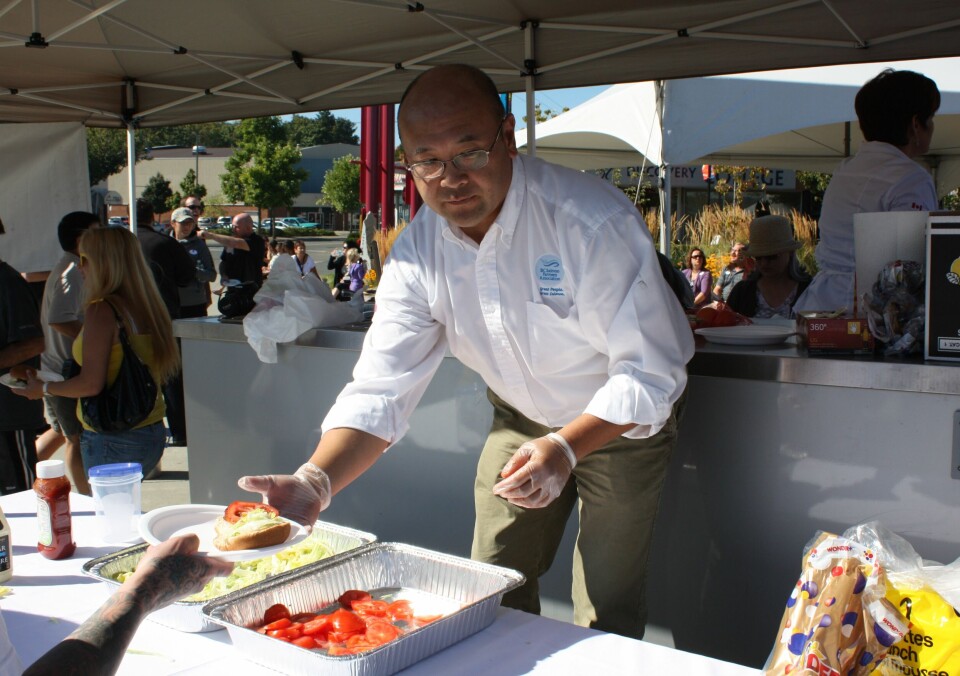
Fish farming explained
A long line-up was formed quickly when news broke that salmon burgers were given out for free to the first 300 lunch customers in down town Campbell River on Monday. The popular event was boosted by summer-like sunshine, and the BCSFA donated money for each burger served to the Campbell River Food Bank, raising over $1,700 (~€1,340) in the process. More people showed up than expected, leaving some to look forward to the next event, when perhaps another 200 burgers will be available. Marine Harvest Canada generously provided the Atlantic salmon for the event.
In a local newspaper insert today, the BCSFA provided what many people likely don’t understand- an easy to read explanation of the process of producing a high quality salmon in a farming environment;
Each year, salmon farmers from Campbell River join the egg, apple, chicken, beef and grain farmers (among many more) at the PNE Kids Farm to talk about raising fish. It's always a busy time as kids gobble up the activity in the excitement of the fair - but there's one question that is common among the young people and their parents: How DO you raise fish on a farm?
We would say it's quite simple, but it's not. In BC, our salmon are raised right from the egg, collected from broodstock raised by our farmers. Fertilized eggs are incubated in hatcheries and raised there for the first year of their lives. These hatcheries are on land and use recirculating technology to manage the amount of water they use. This is a critical stage in the fish's growth. Once the fish are big enough, they will be transferred to their ocean farms, first by truck from the hatchery and then by boat. Each farm has between eight and 12 enclosures, each, holding around 50,000 fish. It seems like a big number, but the salmon only take up about two per cent of the farm space.
Because our farms are in remote areas, the staff will need to take water taxis in for their shifts caring for the fish. They will stay on site for multiple days, in a floating residence attached to the farm. At the farm, the salmon will be raised for up to two years, until they're between five and six kilograms, when they are harvested. Once harvested, they're taken by boat to a processing plant, and then shipped to your local store.
Along the way, there are many details that have to be attended to: regular fish health monitoring, sampling and testing, ongoing environmental testing (water quality and ocean bottom conditions), site safety and biosecurity, maintenance of nets and structures are among the many procedures farmers must undertake to ensure success. They are busy days on the farms: lovely in the summer sun and harrowing in the winter storms. While the process is complex, the real answer to the question of how we raise fish on a farm is actually quite simple: passionately and carefully.
The BCSFA continues its Aquaculture Awareness Week tomorrow, with the Association’s Annual General Meeting being held in Campbell River.






















































